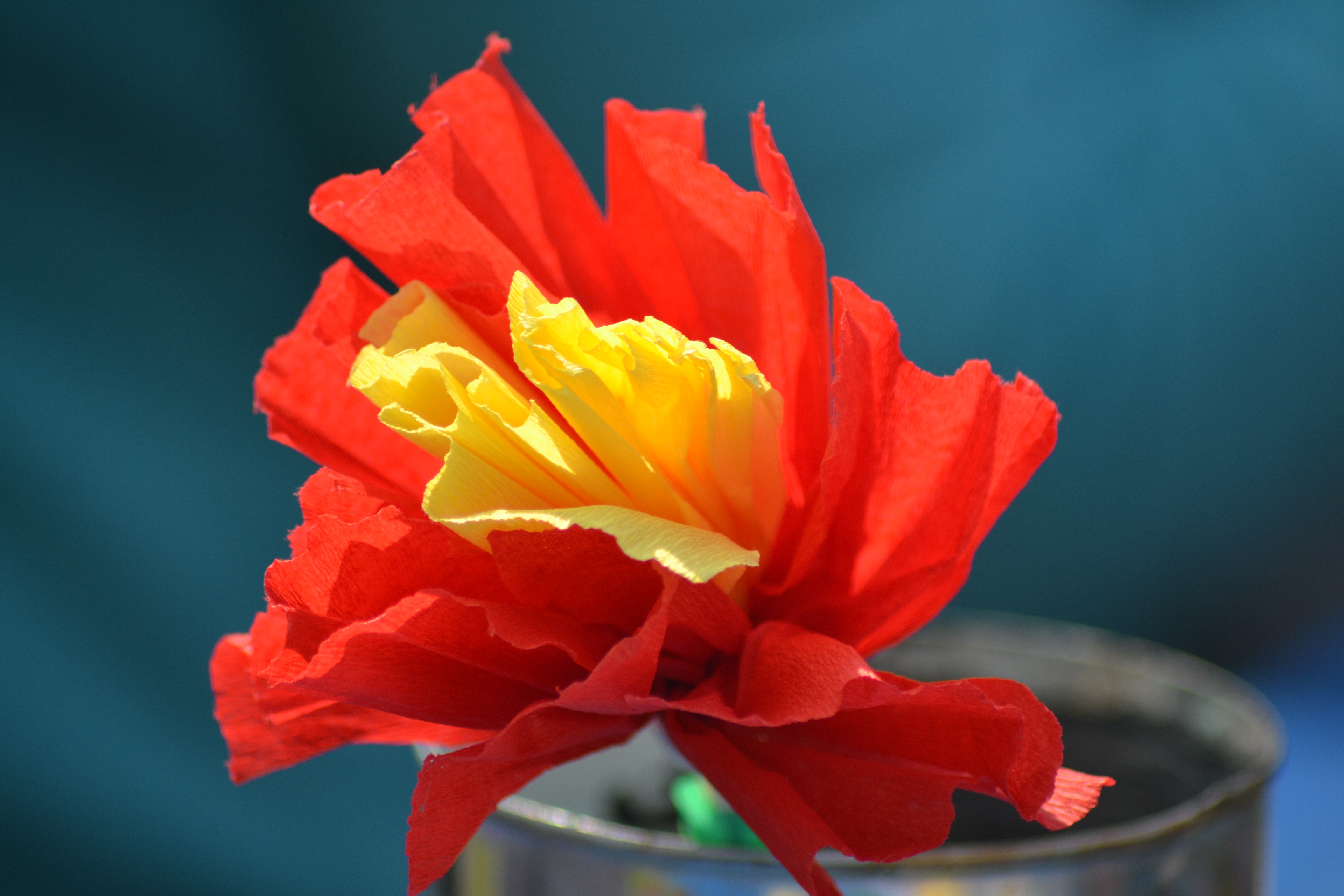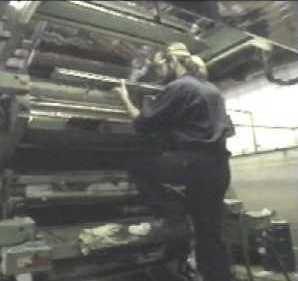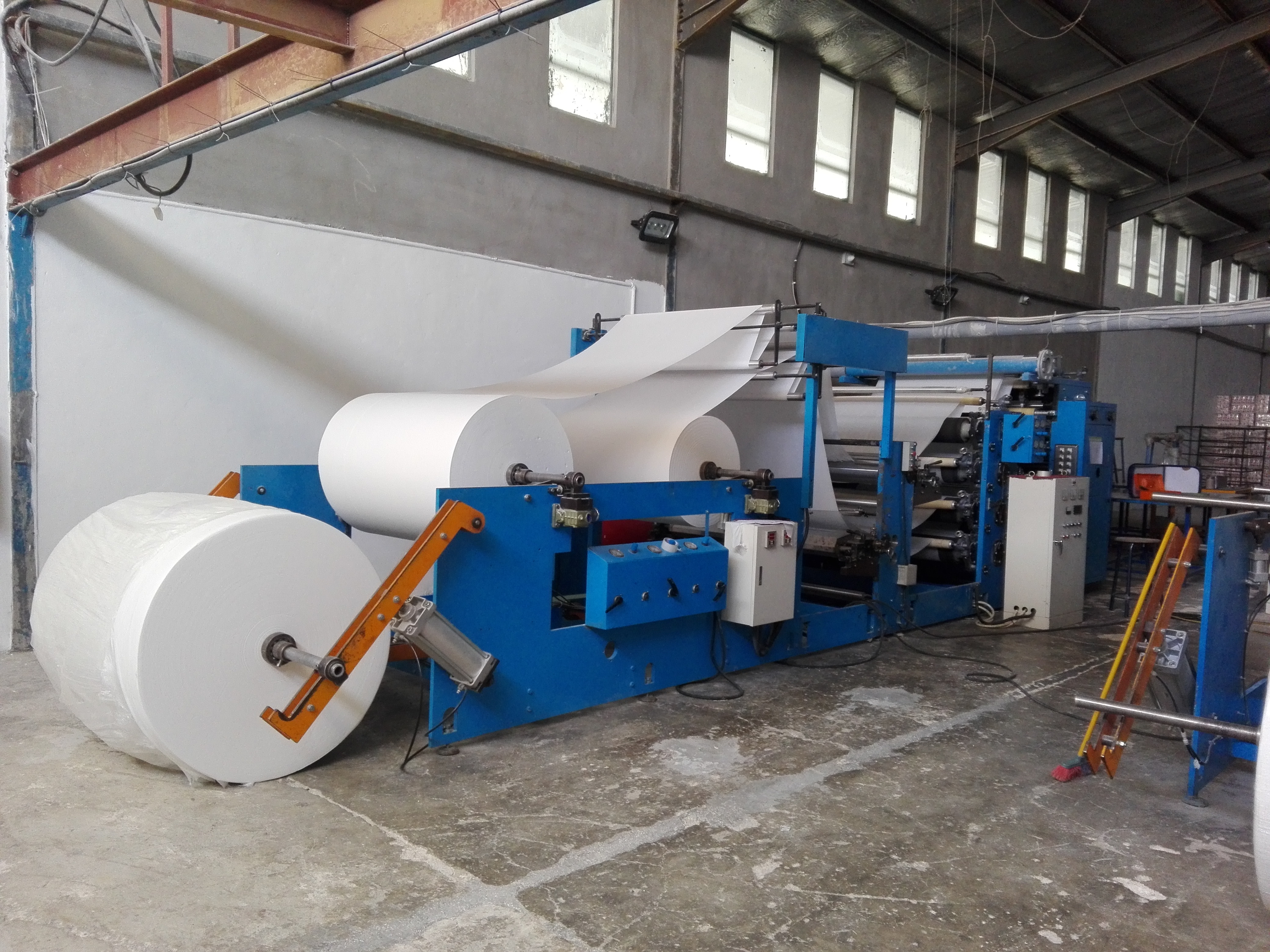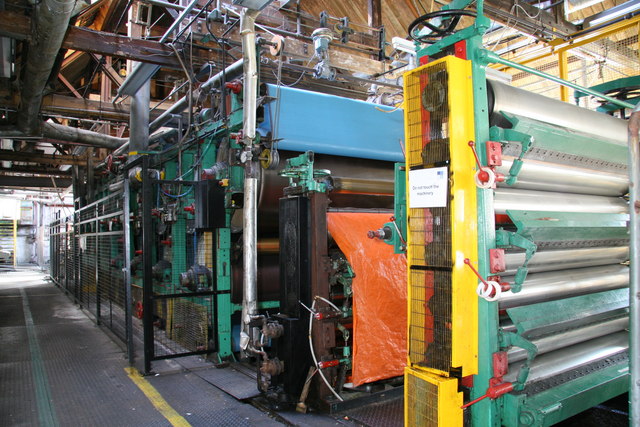|
Crêpe Paper
Crêpe paper is tissue paper that has been coated with sizing (a glue-like substance). It can then be creased in a way similar to party streamers to create gathers, giving it a crinkly texture like that of crêpe. This creasing process is called creping or crêping. Crepe paper is also sold flat and used as a disposable tissue paper. Production Paper that is creped is produced on a paper machine that has a single large steam-heated drying cylinder (''yankee'') fitted with a hot-air hood. The raw material is paper pulp. The Yankee cylinder is sprayed with adhesives to make the paper stick. Crêping is done by the Yankee's ''doctor blade'' that is scraping the dry paper off the cylinder surface. The crinkle (crêping) is controlled by the strength of the adhesive, geometry of the doctor blade, speed difference between the yankee and final section of the paper machine and paper pulp characteristics. Properties Crêpe paper and tissue are among the lightest papers and are norma ... [...More Info...] [...Related Items...] OR: [Wikipedia] [Google] [Baidu] |
Adhesives
Adhesive, also known as glue, cement, mucilage, or paste, is any non-metallic substance applied to one or both surfaces of two separate items that binds them together and resists their separation. The use of adhesives offers certain advantages over other binding techniques such as sewing, mechanical fastenings, or welding. These include the ability to bind different materials together, the more efficient distribution of stress across a joint, the cost-effectiveness of an easily mechanized process, and greater flexibility in design. Disadvantages of adhesive use include decreased stability at high temperatures, relative weakness in bonding large objects with a small bonding surface area, and greater difficulty in separating objects during testing. Adhesives are typically organized by the method of adhesion followed by ''reactive'' or ''non-reactive'', a term which refers to whether the adhesive chemically reacts in order to harden. Alternatively, they can be organized eithe ... [...More Info...] [...Related Items...] OR: [Wikipedia] [Google] [Baidu] |
Tissue Paper
Tissue paper or simply tissue is a lightweight paper or, light crêpe paper. Tissue can be made from recycled pulp (paper), paper pulp on a paper machine. Tissue paper is very versatile, and different kinds of tissue are made to best serve these purposes, which are hygienic tissue paper, facial tissues, paper towels, as packing material, among other (sometimes creative) uses. The use of tissue paper is common in developed nations, around 21 million tonnes in North America and 6 million in Europe, and is growing due to urbanization. As a result, the industry has often been scrutinized for deforestation. However, more companies are presently using more recycled fibres in tissue paper. Properties The key properties of tissues are absorbency, basis weight, thickness, bulk (specific volume), brightness, stretch, appearance and comfort. Production Tissue paper is produced on a Fourdrinier machine, paper machine that has a single large steam heated drying cylinder (Yankee dryer) fi ... [...More Info...] [...Related Items...] OR: [Wikipedia] [Google] [Baidu] |
Junkanoo
Junkanoo is a street parade with music, dance, and costumes with origin in many islands across the English speaking Caribbean every Boxing Day (26 December) and New Year's Day (1 January). These cultural parades are predominantly showcased in the Bahamas where the music is also mainstreamed, and competition results are hotly contested, There are also Junkanoo parades in Miami in June and Key West in October, where local black populations have their roots in the Caribbean. In addition to being a culture dance for the Garifuna people, this type of dancing is also performed in The Bahamas on Independence day and other historical holidays. Historically, Junkanoo parades were also found in Southeastern North Carolina. However, the custom became less popular after slavery was abolished. The last known Jonkonnu celebration in the Southern United States was in Wilmington, N.C., in the late 1880s. Dances are choreographed to the beat of goatskin drums and cowbells. History The festiva ... [...More Info...] [...Related Items...] OR: [Wikipedia] [Google] [Baidu] |
Tamale
A tamale, in Spanish tamal, is a traditional Mesoamerican dish made of masa, a dough made from nixtamalized corn, which is steamed in a corn husk or banana leaf. The wrapping can either be discarded prior to eating or used as a plate. Tamales can be filled with meats, cheeses, fruits, vegetables, herbs, chilies, or any preparation according to taste, and both the filling and the cooking liquid may be seasoned. ''Tamale'' is an anglicized version of the Spanish word (plural: ). comes from the Nahuatl . The English "tamale" is a back-formation of , with English speakers interpreting the ''-e-'' as part of the stem, rather than part of the plural suffix ''-es''. Origin Tamales originated in Mesoamerica as early as 8000 to 5000 BC. The preparation of tamales is likely to have spread from the indigenous cultures in Guatemala and Mexico to the rest of Latin America. According to archaeologists Karl Taube, William Saturno, and David Stuart, tamales may date from around ... [...More Info...] [...Related Items...] OR: [Wikipedia] [Google] [Baidu] |
Sack Paper
Kraft paper or kraft is paper or paperboard (cardboard) produced from chemical pulp produced in the kraft process. Sack kraft paper (or just sack paper) is a porous kraft paper with high Elasticity (physics), elasticity and high tear resistance, designed for packaging products with high demands for strength and durability. Pulp produced by the kraft process is stronger than that made by other wood pulp#Wood pulp, pulping processes; acidic sulfite processes degrade cellulose more, leading to weaker fibers, and mechanical pulping processes leave most of the lignin with the fibers, whereas kraft pulping removes most of the lignin present originally in the wood. Low lignin is important to the resulting strength of the paper, as the hydrophobic nature of lignin interferes with the formation of the hydrogen bonds between cellulose (and hemicellulose) in the fibers. Kraft pulp is darker than other wood pulps, but it can be Bleaching of wood pulp, bleached to make very white pulp. Full ... [...More Info...] [...Related Items...] OR: [Wikipedia] [Google] [Baidu] |
Doctor Blade
In printing the doctor blade (from ''ductor blade'') removes the excess ink from the smooth non-engraved portions of the anilox roll and the land areas of the cell walls. Doctor blades are also used in other printing and coating processes, such as flexo and pad printing for the same function. It is believed that the name derives from the blades used in flatbed letterpress equipment for blades used to wipe ductor rolls, and "ductor" became doctor. Design In a single blade ink system or dual blade ink system, the blade removes the excess ink from the cylinder or anilox roll to create a uniform layer of ink to be transferred to the printing plate. The blade/anilox combination is designed such that it is (chiefly) the blade which wears away, not the anilox roll. The doctor blade is a relatively cheap and disposable consumable, while the gravure cylinder or flexo anilox is a more expensive component of the press. Typical materials for the blade are steel or polymer: gravure cylinders ar ... [...More Info...] [...Related Items...] OR: [Wikipedia] [Google] [Baidu] |
Yankee Dryer
A Yankee dryer is a pressure vessel used in the production of machine glazed (MG) and tissue paper. On the Yankee dryer, the paper goes from approximately 42–45% dryness to just over 89% dryness. In industry, MG cylinders or Yankee dryers are primarily used to remove excess moisture from pulp that is about to be converted into paper. The Yankee cylinder can be equipped with a doctor blade and sprayed with adhesives to make the paper stick. Creping is done by the Yankee's ''doctor blade'' that is scraping the dry paper off the cylinder surface thereby crêping the paper. The crinkle (crêping) is controlled by the strength of the adhesive, geometry of the doctor blade, speed difference between the yankee and final section of the paper machine and paper pulp characteristics. Configuration Whereas in other paper productions a series of drying cylinders is used, in tissue production only one cylinder (the yankee cylinder) dries the paper. This is due to the necessity of creping and ... [...More Info...] [...Related Items...] OR: [Wikipedia] [Google] [Baidu] |
Tissue Paper
Tissue paper or simply tissue is a lightweight paper or, light crêpe paper. Tissue can be made from recycled pulp (paper), paper pulp on a paper machine. Tissue paper is very versatile, and different kinds of tissue are made to best serve these purposes, which are hygienic tissue paper, facial tissues, paper towels, as packing material, among other (sometimes creative) uses. The use of tissue paper is common in developed nations, around 21 million tonnes in North America and 6 million in Europe, and is growing due to urbanization. As a result, the industry has often been scrutinized for deforestation. However, more companies are presently using more recycled fibres in tissue paper. Properties The key properties of tissues are absorbency, basis weight, thickness, bulk (specific volume), brightness, stretch, appearance and comfort. Production Tissue paper is produced on a Fourdrinier machine, paper machine that has a single large steam heated drying cylinder (Yankee dryer) fi ... [...More Info...] [...Related Items...] OR: [Wikipedia] [Google] [Baidu] |
Paper Pulp
Pulp is a lignocellulosic fibrous material prepared by chemically or mechanically separating cellulose fibers from wood, fiber crops, waste paper, or rags. Mixed with water and other chemical or plant-based additives, pulp is the major raw material used in papermaking and the industrial production of other paper products. History Before the widely acknowledged invention of papermaking by Cai Lun in China around 105 AD, paper-like writing materials such as papyrus and amate were produced by ancient civilizations using plant materials which were largely unprocessed. Strips of bark or bast material were woven together, beaten into rough sheets, dried, and polished by hand. Pulp used in modern and traditional papermaking is distinguished by the process which produces a finer, more regular slurry of cellulose fibers which are pulled out of solution by a screen and dried to form sheets or rolls. The earliest paper produced in China consisted of bast fibers from the paper mul ... [...More Info...] [...Related Items...] OR: [Wikipedia] [Google] [Baidu] |
Fourdrinier Machine
A paper machine (or paper-making machine) is an industrial machine which is used in the pulp and paper industry to create paper in large quantities at high speed. Modern paper-making machines are based on the principles of the Fourdrinier Machine, which uses a moving woven mesh to create a continuous paper web by filtering out the fibres held in a paper stock and producing a continuously moving wet mat of fibre. This is dried in the machine to produce a strong paper web. The basic process is an industrialised version of the historical process of hand paper-making, which could not satisfy the demands of developing modern society for large quantities of a printing and writing substrate. The first modern paper machine was invented by Louis-Nicolas Robert in France in 1799, and an improved version patented in Britain by Henry and Sealy Fourdrinier in 1806. The same process is used to produce paperboard on a paperboard machine. Process sections Paper machines usually have at leas ... [...More Info...] [...Related Items...] OR: [Wikipedia] [Google] [Baidu] |









